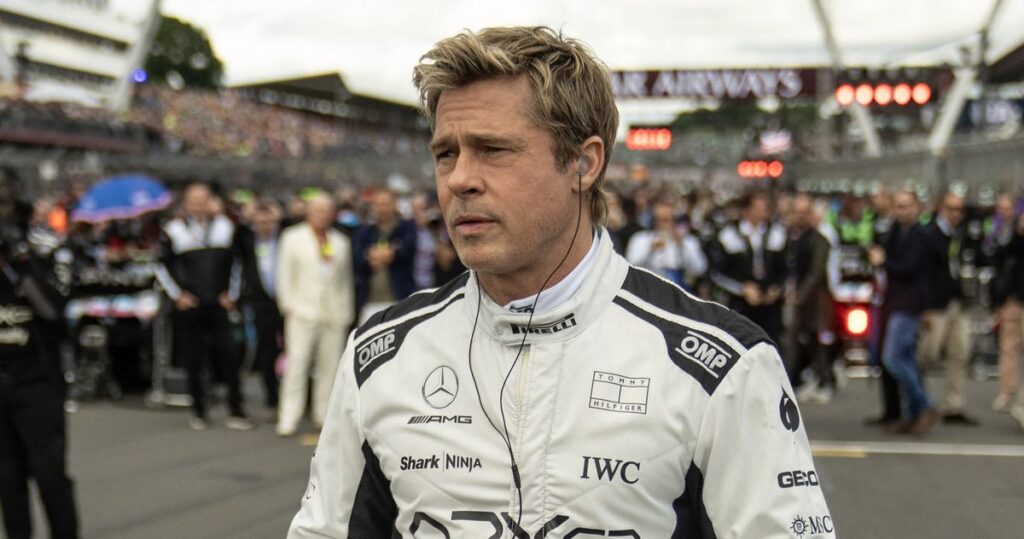
In the high-octane world of Formula One, the film “F1: The Movie” introduces audiences to a fictional racing team, APXGP, teetering on the brink of collapse. With a young, impulsive driver, Joshua Pearce, and an owner at his wit’s end, the team turns to rugged American cowboy Sonny Hayes, portrayed by Brad Pitt, to revive their fortunes. Hayes employs an aggressive racing style, crashing and disrupting other drivers to give Pearce an edge. But can such tactics exist in real-world racing?
The film’s portrayal of racing strategies raises questions about the authenticity of its depiction of Formula One. To explore these themes, we spoke with Chris Medland, a seasoned motorsports journalist based in London, who has been covering the sport since 2011. Medland, who attended numerous F1 races, shared insights into the film’s reception among the motorsport community.
Fiction vs. Reality in Racing Strategies
In “F1: The Movie,” Sonny Hayes’s aggressive tactics, including intentionally triggering safety cars, form the crux of the film’s thrilling sequences. However, Medland points out that such strategies would be highly controversial in the real world. He recalls a scandal from 2008, known as “Crashgate,” where a team instructed a driver to crash deliberately to benefit a teammate. The fallout was significant, with lifetime bans imposed on two individuals involved.
“If that was seen as something done deliberately, it would be pretty problematic,” Medland explains, highlighting the ethical boundaries in Formula One.
While aggressive driving is not unheard of, the intentional creation of safety car scenarios is frowned upon. Medland emphasizes that the sport has evolved to prioritize safety and fair competition, with stringent penalties for rule violations.
The Role of Team Dynamics
The film also explores the dynamics between teammates Pearce and Hayes, who oscillate between collaboration and competition. Medland notes that in real Formula One, drivers within the same team often operate independently, especially when competing for podium finishes or championships. The stakes are high, and individual ambitions can sometimes overshadow team objectives.
Medland explains, “You’ll see better team harmony between drivers in slower cars. Once the stakes get higher, that’s when they start to split, especially when there are wins or a World Championship on the table.”
The Importance of Tire Strategy
A key element in both the film and real-world Formula One is tire strategy. The choice between soft, medium, and hard tires can significantly impact a race’s outcome. Soft tires offer maximum grip but wear out quickly, while hard tires are more durable but slower. Teams must carefully balance these options to optimize performance.
“One of the rules of racing is you have to use at least two different tire compounds during a race,” Medland highlights, illustrating the strategic complexity involved.
Physical Demands on Drivers
Another aspect the film touches on is the physical demands placed on drivers. Sonny Hayes’s unconventional training methods, such as jogging and juggling tennis balls, contrast with the high-tech equipment used by his teammate Pearce. Medland acknowledges that while cardio and neck strength are crucial, the best training for driving is driving itself.
“All of the drivers will say the best training for driving these cars is driving the cars,” Medland asserts, noting that drivers often engage in other forms of racing to maintain their physical condition.
American Drivers in Formula One
With Brad Pitt’s character representing an American presence in the sport, the film raises questions about the current state of American drivers in Formula One. While there are no American drivers in the league at present, Medland suggests that the sport’s growing popularity in the U.S. could lead to more opportunities for American talent.
“With the way that Formula One has boomed in the U.S. recently — including with this film — there might be a big drive to get another American in,” Medland speculates.
Impact of “F1: The Movie” on the Sport
Despite its dramatized portrayal of racing, “F1: The Movie” serves as a commercial for the sport, showcasing the team effort behind the scenes and the prevalence of sponsorships. Medland believes that while the film may not perfectly capture the intricacies of Formula One, it offers a glimpse into the sport’s excitement and complexity.
“It’s the biggest team sport in the world,” Medland quotes a team boss, emphasizing the collaborative nature of Formula One.
As the film continues to attract audiences, it sparks discussions about the ethics and realism of racing, potentially drawing new fans to the sport. Whether viewers are seasoned fans or newcomers, “F1: The Movie” invites them to explore the thrilling world of Formula One, where strategy, skill, and teamwork converge on the track.







